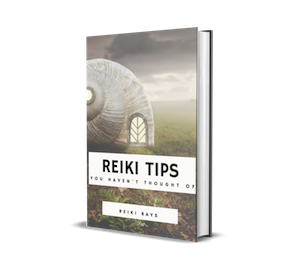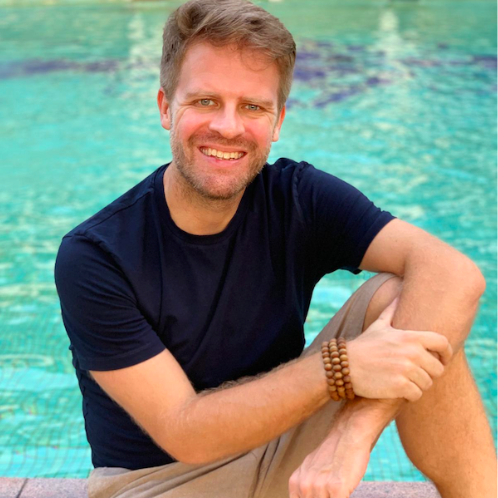Anger is such a familiar emotion for all of us. I’m certain we can relate to this emotion and I’m certain we can find almost daily occurrences where anger seems to arise. And as Reiki practitioners, then we might want to investigate some practices that we can cultivate in our daily existence, in order to help allow this emotion of anger to flow through us, as opposed to remaining attached to the emotion or indeed to the roots of the emotion.
And so in this article, I want to share five tips that all Reiki practitioners, seasoned and new alike can utilize in their daily life to help allow anger to pass. This is not a denial that anger exists. Of course, it does. It’s an emotion just like all of our other emotions. But rather this is an article to help remind us that Reiki is a practice of detachment. It’s a practice to help us cultivate a space where we’re able to allow all things to flow. If we focus on healing alone, then we’re not cultivating a space where all things can flow. If we simply focus on healing from a Reiki perspective, then for instance, what happens if that healing doesn’t come? Well, then we might get angry, and then we’re back to square one.
So we need to learn to cultivate stillness to counter our attachments in all forms, including anger. Here are the five tips that will allow your anger to pass:
1. Take a moment and breathe
My first tip in allowing anger to be replaced with calmness, is simply to take a moment and breathe. This doesn’t mean that we can only do this when we are actively practicing Reiki. Indeed, we can do this at any moment of our life or our day. We can utilize this with whatever it is that’s causing us anger, or when we’re right in the middle of anger. If we can take ourselves away from that impetus, or thing that is fueling the emotion of anger, if we can just close our eyes, and if we can just breathe, then the fire that is building with this anger will start to dissipate very quickly. We can start to return to calmness within the mind and the body. Even if it’s just for a minute! Even if the change of our mind and our body is minuscule! It’s still better than the state of chaos that could be perpetrated by anger. And it literally is as simple as that: taking a step back, closing the eyes, and breathing. This brings us into the parasympathetic nervous system and it allows us to find even just the slightest bit of increased calmness in that moment.

2. Remember the guiding precepts
Building on this then with my second tip, is to remember the guiding precepts. And of course, one of the main guiding precepts is just for today, I will not anger. And so, if Reiki is a deeply resonating practice with you, if you walk your daily existence by following the precepts, then this is obviously very familiar to you. But what does this mean, just for today, I will not anger? Because of course, we will get angry at some point, most likely anyways! And when we do, if we remember this preset, then what we’re doing is we’re catching ourselves in the activity of anger and in the expression of anger, and we’re reminding ourselves to come back to center. We’re reminding ourselves to not stay focused on the anger, but to rather come back to focusing on calmness. And what I love about the precepts is how simple they are and how they constantly remind us of this practice. And further to that, I love how achievable the precepts are. Let’s say you’re maybe having a terrible day. Perhaps you’re having the worst day ever. Perhaps your house just caught on fire. You’ve just been fired. Your relationships have just come to an end. Like literally everything is going wrong.
Tell that person in that space: Just for today, don’t be angry. I don’t think it would go well for you!
Well, if you’re having the worst day of your life that might be a pretty tall ask. And so, what I love about the precepts is again, how achievable they are. Because what if we changed the precept from just for today to something like just for this next breath, I will not anger. Well, even in the eye of the biggest storms that we face, perhaps just for one breath, we can find a little bit of calmness and see if we can find calmness in one breath. Then that means the next breath that we take will be that much more calm and we have a knock-on domino effect here where we are meeting each and every breath hopefully, with less and less anger. The events are still happening. The anger may still be there, but we’re taking away the emotional response. So following the precepts can be so incredibly important. And making those precepts achievable, in my opinion, is even more important.
3. Practice self-Reiki
For the next tip, consider what to do during self-Reiki. If you’re working on yourself via self Reiki then you might simply place your hands over the solar plexus and in particular over the liver. From a Chinese medicine perspective, the liver holds the emotion of anger. And I think it’s quite interesting that we all know this to be true. It’s in our vernacular. If we know the statements that we hear all the time, those who are angry or hot-headed or full of steam. There’s heat associated with anger. You get red in the face. Heat is in the solar plexus. And we are expressing that via the liver. If we place our hands simply over the liver, close our eyes and breathe, then not only are we helping to dispel the emotional attachment to anger by closing our eyes and breathing but we’re also helping to relieve the trapped energy in the liver itself, which is the root of the anger. Or to put it another way, we are turning in towards the root of our anger and taking the story away from it. By simply staying still and quiet. And so, we leave our hands here on the liver as long as needed until we come back to stillness and calmness. This practice brings me to my next point in being able to transmute anger and turn it into calmness.
4. Remaining Present
In any of the previous notes or points, we need to simply not just exist with them as if they’re a bucket list or tick boxes. Rather, we need to remain present with them. Whatever you’re feeling, whatever is happening to you try to move with it. Anger is an expression of resistance. And resistance is a form of attachment. And from all attachment comes suffering. And so, see if we can simply reside or be present with the state of our existence in this very moment or this very breath.
Well, then we start to release our attachment, we start to release the experience of our suffering here. It doesn’t mean that the triggers that are making you angry are not happening. But what it means is that you can reside and flow with them as opposed to fighting back or attaching to them.
And if we can do that, then we can start to recognize that anger just like every emotion is a form of disbalance. If we can remain balanced, then our emotions will come back to neutrality. You know one of the beautiful practices that this reminds me of in Reiki is Gassho, bringing the hands to prayer at heart center. This is a practice of balance. It’s a practice of non-duality. It’s a practice of bringing everything into center without belief or story. It’s a practice of remaining present with wherever you are at this very moment and being with it and flowing with it. And indeed, isn’t that what Reiki is?
My final point is to always remember that whatever it is that you’re experiencing, or moving through whatever it is that’s triggering you, whatever pain it is, whatever form of suffering, if we simply recognize that.
5. This too shall pass
If we can remember this, then we may be able to find within this tip the space to really cultivate the four previous tips within our Reiki practice. We may find a space that really allows anger to turn into calmness. See, remember if we get caught in the storm, then we become attached to the storm and further we become the storm. So, if we become attached to the triggers of our anger, we become the triggers. However, if we recognize that these triggers too shall pass, then instead of becoming attached to the triggers, we start to cultivate calmness. And if we can cultivate calmness, then those triggers will pass even quicker. The hands on the solar plexus and the liver will start to feel at peace that much quicker. Remaining present with our triggers will be that much easier. Recognizing the truth and the wisdom and the guiding precepts will be that much more obvious. And taking a moment to just simply breathe will be that much more approachable.
Article by Bruce Taylor
Free eBook download: We’ve created an eBook with our best articles on this topic, and offer it for free to all our newsletter subscribers.


Bruce Taylor
Bruce Taylor is a Reiki Master Practitioner and Teacher based in France. He has practiced Reiki since 2006 and his practice focuses on Usui Reiki Ryoho, having been trained in Kyoto, Japan.
He works and trains others globally both in person and via his online offerings found at www.rootsoflife.org
Further to that, he manages the Usui Reiki Ryoho Support and Community Group on Facebook which all are welcome to join (www.facebook.com/groups/129366524359731)
Bruce also manages his youtube channel where he focuses on Reiki and Holistic Wellness content (www.youtube.com/c/RootsofLife)
And as this is the 100th anniversary of Usui Reiki Ryoho, he is leading a pilgrimage to the birthplace of Reiki – Kyoto, Japan, as soon as Japanese borders are open again to tourism. For more information on this truly once in a lifetime celebration, please visit: https://rootsoflife.org/reiki-pilgrimage-kyoto/





Leave a Reply